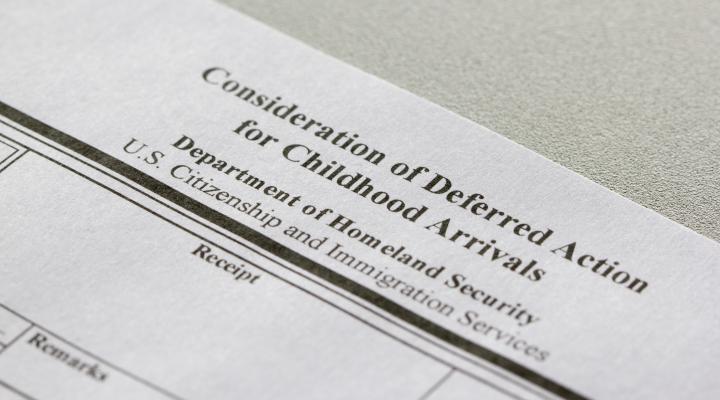Understanding DACA

DACA was meant to provide temporary relief from deportation and work authorization for undocumented immigrants who arrived in the United States as children. The program was designed to address the challenges faced by individuals known as "Dreamers" and offer them an opportunity to legally contribute to the country they consider home.
Eligibility and Application
To be eligible for DACA, individuals must have arrived in the United States before turning 16, have continuously resided in the country since June 15, 2007, meet specific educational or military service requirements, and pass background checks.
Applicants must complete the Form I-821D, Consideration of Deferred Action for Childhood Arrivals, along with supporting documentation and filing fees. The process also includes biometric services and an interview, if necessary.
Here is an overview of the process, including the necessary forms and fees.
Determine Eligibility
- To be approved, you:
- Arrived in the United States before reaching your 16th birthday.
- Were under the age of 31 as of June 15, 2012.
- Have continuously resided in the United States since June 15, 2007.
- Were physically present in the United States on June 15, 2012, and at the time of applying for DACA.
- Entered the United States without inspection or your lawful immigration status expired before June 15, 2012.
- Are currently in school, have graduated or obtained a certificate of completion from high school, have obtained a general education development (GED) certificate, or are an honorably discharged veteran of the U.S. Armed Forces.
- Have not been convicted of a significant misdemeanor, felony, or pose a threat to national security or public safety.
- Gather Required Documents: Collect the necessary documents to support your DACA application. These typically include identification documents, evidence of continuous residence, proof of education or military service, and other supporting materials. Consult the official U.S. Citizenship and Immigration Services (USCIS) guidelines for a detailed list of required documents.
- Complete Form I-821D: The main form to apply for DACA is Form I-821D, Consideration of Deferred Action for Childhood Arrivals. This form collects personal information and details about your eligibility. Additionally, you will need to complete Form I-765, Application for Employment Authorization, and Form I-765WS, Worksheet, to request work authorization.
- Fill Out Form G-1145 (optional): This form is an optional notification that allows you to receive electronic notifications about your application's status.
- Pay the Fees: The fee for filing Form I-821D is $495, and the fee for Form I-765 is $550. However, fee amounts are subject to change, so it's crucial to check the USCIS website or consult with an immigration attorney for the most up-to-date information. In certain circumstances, fee waivers may be available.
- Prepare and Send the Application: Organize your completed forms, supporting documents, and fees together. Make copies of everything for your records. Mail the application package to the appropriate USCIS lockbox facility, as indicated in the instructions for Form I-821D.
- Await USCIS Response: After submitting your application, you will receive a receipt notice from USCIS. This notice will provide a case number that you can use to track the progress of your application. USCIS will then review your application, conduct a background check, and make a decision on your DACA eligibility.
USCIS procedures and requirements may change, so it's advisable to visit the USCIS website or consult with an immigration attorney for the most up-to-date and accurate information regarding the DACA application process.
Renewal of DACA Status
- DACA recipients can apply for renewal of their status every two years. The renewal process involves submitting Form I-821D, supporting documents, and fees, along with proof of continuous residence in the United States.
- DACA recipients are granted temporary work authorization through this status, allowing them to obtain lawful employment in the United States. While DACA does not provide a path to citizenship or lawful permanent residence, it offers temporary protection from deportation and allows recipients to reside in the United States without fear of removal.
- DACA recipients can apply for advance parole, which grants them permission to travel outside the country for specific reasons, such as education, employment, or humanitarian purposes.
DACA as it Stands Today
The DACA program has served as a vital lifeline for undocumented individuals who arrived in the United States as children, providing them with temporary relief from deportation and work authorization. Despite legal challenges and attempts to rescind the program, DACA continues to positively impact the lives of hundreds of thousands of individuals. Understanding the program's history, application process, and limitations is essential for comprehensive immigration discussions and policymaking.
The information provided on www.onepercentforamerica.org is intended for general informational purposes only. It should not be considered as professional advice or a substitute for seeking professional guidance.



